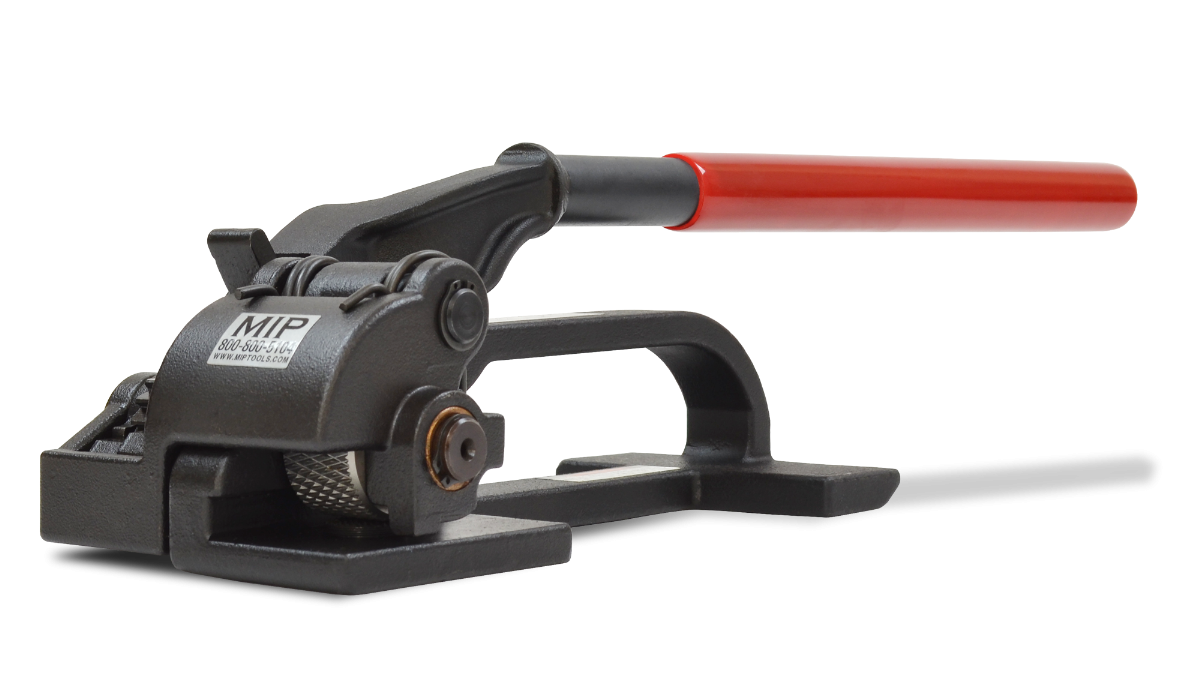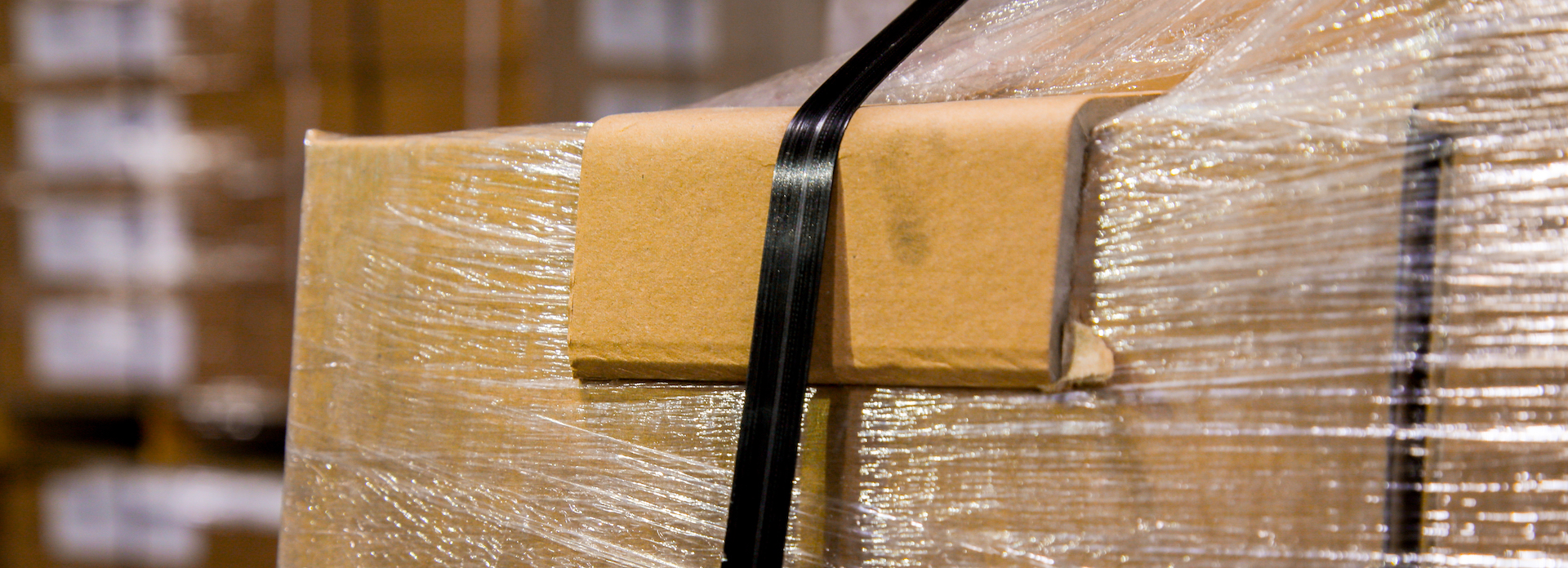Now that you’ve figured out how to pick the right strapping for your deliverables, let's learn about how to use CWC strapping tools to properly attach your steel strap.
Remember, these heavy-duty metal straps are sharp and a common cause of injury! Using proper safety gear while handling steel banding straps is the best way to avoid injury. Some PPE we recommend while working with steel banding include leather or cut-resistant gloves, safety glasses, a thick long sleeve shirt, and pants to protect the skin.
We offer all these items here on our site, give us a call to get everything you’ll need to start properly attaching steel banding in your warehouse operations. If you don't see what you are looking for, CWC's new product offerings are growing daily!
+ How to Choose the Right Tools to
Secure your Steel Strap
Although there are automatic steel strapping tools, today we will be talking about the more economical and common hand tools.
In most cases we find warehouses will use 4 tools to secure their steel straps: tensioner, shears, crimper, and seals. Let's quickly go over each of these and describe their uses.
Note, while using a ¾” metal strap, you want to ensure your strapping tools and seals are intended to be used for that size strap. Some tools can’t be used with multiple sizes of straps, so check which size strap is most used in your warehouse and purchase tools accordingly.
 |
+ TensionerThe tensioner is what makes the steel band tight around the object. They often have a single lever and a grip you can use to open the tool and insert the strap. |
 |
+ Strap Sealer (Crimper)You’ll need to use a crimper to close your seals around the metal banding. These have long handles and are specific widths. Be sure to use the correct width crimper for your specific seal size. |
 |
+ Metal ShearsShears are used to trim the extra metal strapping after attaching the seal. Make sure to dispose of the waste material properly because it can cause injury and damage machinery and equipment. |
 |
+ SealsA metal seal is wrapped around the strap to secure the hold. There are many types of seals, but you should choose your seals based on your cargo’s journey, the type of strapping you will be using, and of course the size of strapping around the load. You want to be sure that the size of the seal is the same as the width of your strapping. |
+ The all-in-one tool
If you are looking to optimize your time, and decrease the number of tools needed to strap pallets, we suggest using the Sealless Combo Tool. This multi-faceted tool is the tensioner, crimper, and shears all-in-one.
 |
+ Sealless Combo ToolIn some cases, a combination sealless strapping tool will be the only steel banding tool you will need. A combo strapping tool can eliminate the need for having multiple tools, eliminating the extra cost. It acts as an all-in-one tool because it does the job of a tensioner, crimper, sheers, and creates its own seal. Since this tool is multifunctional, it also increases productivity in warehouses by saving time! |
+ How to use Steel Strapping Tools
Now that we are more familiar with the tools required to attach a steel strap properly, let's go over the steps.
First, wrap your steel banding strap starting from under the cargo you’re trying to secure. Once it’s been wrapped, layer the straps over each other with the strap closest to you on top. Make the steel band as tight as possible by hand to eliminate the slack. After that, reach for your tensioner tool.
 |
You want to ensure that the cargo is secure and tight to avoid movement or damage of the cargo during transit. To do this, open the tensioner by squeezing the grip lever and place the layered portion of the strap in the gap between the base and grip wheel in the tensioner. Release the grip lever and secure the strap once positioned properly. Be sure to leave a few extra inches out in front of the tensioner. |
 |
Now, move the tensioning lever up and down to tighten your straps to a level of tension you are satisfied with. Once that level is reached, move the lever to the lowered position and reach for an appropriately sized seal. Remember, your seal must be the same size as your steel strap. |
 |
Place the seal open side down near the front of the tensioner on top of both straps. Once you are happy with the placement, use the crimper to attach the seal onto the straps. |
 |
Open the crimper tool and place the nose fully around the seal. Applying force, close the crimper on the seal to create a strong binding of straps. Open the crimper to release the seal and ensure you’ve secured it properly. Lastly, we do not need the extra strapping we left earlier on the far side of the seal, so grab the metal shears and snip the excess. Be careful, heavy-duty steel strap will be sharp once cut! |
+ How to use a Sealless Strapping Tool
With the Combination Strapping tool, the process is a bit more streamlined. If you’d like to be more efficient, this is the tool for you.The combination steel banding tool has the same steps as the previously described process, but only uses a single tool! No need to touch the tensioner, crimper, seals, or sheers if you have this tool.
Just like the previous process, we start by wrapping our cargo and layering the end and the beginning of the strap on top of each other with the strap closest to you on top.
Tighten the strap as much as possible by hand. After the tension is applied, grab your combination tool and place the straps layered on top of each other in between the tool by opening the tool using the grip lever.
After inserting the strap into the tool and releasing the grip lever, use the tensioner lever to apply pressure and tighten the strap. Do this by raising and lowering the tension lever back and forth. Once desired tension has been applied to the steel band, return the tensioner lever to the starting position. Holding the combination tool in place, move the sealing lever all the way up and then back down. This will create a seal and cut the excess strap in a single instance.
Lastly, open up the combo tool to release the excess strap. Dispose of the cut strapping and ensure the seal is to your liking. That’s it! One tool does it all!
There you have it! You’ve secured your cargo and now it’s ready to be shipped. Just ensure that the sizing of your straps and tools match up so that the process is unproblematic. CWC offers all the strapping material and tools you’ll need in your warehouse. We also have many PPE options to ensure your workers are safe while dealing with this potentially harmful strapping. Check out our website to see some of our inventory! Looking for something particular? Give us a call and CWC can help you get the products you need.

Written By Steve Porter
CWC Product Expert
Published: 08/09/2022
Last Modified: 08/09/2022






